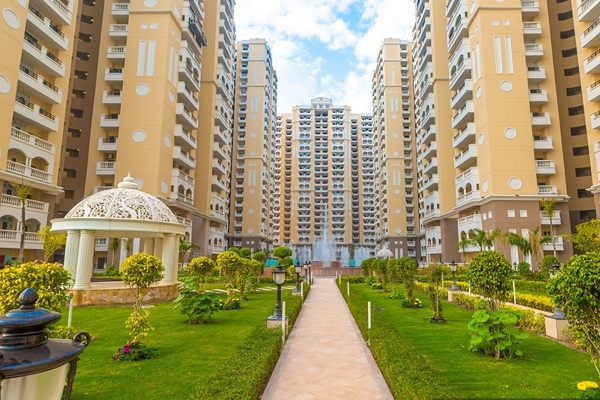The upcoming Greenfield International airport at Jewar, Uttar Pradesh, will be the third in the National Capital Region (NCR) after the Delhi IGI Airport and the Hindon airport in Ghaziabad. The airport will be built as a world-class facility and the project has recently been allotted Rs 2,000 crore from Yogi Adityanath government in the UP Budget which is nearly half the estimated cost of Phase-I.
Recently, Zurich Airport International AG won the contract outbidding its competitors including Delhi International Airport Limited, Adani Enterprises, and Anchorage Infrastructure Investments Holdings Limited. The master plan discussions with the officials of the Noida International Airport Ltd (NIAL) have been completed.
The Swiss company would soon apply to the Union home ministry for a safety clearance for the airport project, work on which is set to start in February 2020. The Gautam Buddh District Administration has also transferred the entire 1,334 hectares of land required for Phase-I of the project.
The foundation stone for the airport project, which was first conceived in 2001 and received approval only over a decade-and-half later, will entail the development of 2,200 acres of land and would be operational by 2023. With that, the national capital region will get the distinction of hosting two airports within a 100-kilometer radius.
This Greenfield project would be a game-changer for the Real Estate market of Noida which was reeling under the recessionary grip. The arrival of the airport would boost this property market with several other infrastructural developments.
The Jewar Airport will have an Aerocity on the lines of the one at the IGI airport. Plans are also in the works to link the $3.1 billion Jewar airport with the Delhi’s Metro’s Aqua Line by 2025. The government is also considering the possibility of linking the airport with Sarai Kale Khan, a major bus transit station in the national capital, through a dedicated Rapid Rail Transit System (RRTS). At a later stage, the Jewar airport could be connected with the Eastern Peripheral Expressway that joins Haryana’s Palwal with Kundli, bypassing the national capital.
According to the Uttar Pradesh Real Estate Regulatory Authority (UP-RERA), there are over 100 stuck projects in the region; unofficial estimates peg this number at 1.5 lakh units.
According to PwC, the agency that has prepared the techno-economic feasibility report for the project, the Jewar Airport is expected to handle over 10 crore passengers by 2050, serving 37 domestic and 31 international destinations.
Currently, people living in many cities of western UP and some cities of Rajasthan have to travel to Delhi, a journey of at least two hours, if they plan air travel. An airport in Jewar will be a great help for these people. This airport will not only address the aviation needs of Delhi but also of cities such as Agra, Mathura, Bulandshahr, and Meerut. The Union civil aviation ministry expects this airport to bolster tourism and economic potential of the region. The multiplier effect on the local job market will be very high both in the unorganised and organised sector.
Already the cascading effects of the project can be seen on the ground, due to the ongoing developments, rates of the property along the area have grown substantially.
Landowners can already see the difference. While a bigha of land was sold for Rs 4-5 lakh in the past, rates have now touched Rs 20-25 lakh a bigha. A bigha of land measures 843 square metre. Farmers whose land is being acquired for the project are being offered three times the circle rate. While the prevalent land rate in the area is Rs 900 per square metre (psm), the government is offering villagers Rs 2,300 psm.


